Welcome to our Colossus Movie Guide for The Favourite. This guide contains everything you need to understand the film. Dive into our detailed library of content, covering key aspects of the movie. We encourage your comments to help us create the best possible guide. Thank you!
What is The Favourite about?
The Favourite might take place in 18th Century England, but its exploration of power, identity, and deception in a royal setting serves as a timeless depiction of the manipulative tactics used in politics. Our three main characters, Queen Anne, Sarah, and Abigail, are caught in a cutthroat chase for power, twisting arms and playing mind games to climb the ladder or trip someone else up. Yorgos Lanthimos’ story uncovers the way personal drives and conflicts can drive people apart and twist our concept of leadership—leading to broader ramifications for everyone, leading to social wounds that might not reveal themselves until years later.
The film’s climax delivers a striking message about the price of ambition and intrigue in a world where social climbing can lead to a precarious fall from grace—underscoring the heavy toll exacted by deceit and favoritism, casting a spotlight on the strained relationship between those in power and those hungrily chasing it. Themes like desire and the scramble for control, and motifs like sexual manipulation and fragile animals (think of those rabbits), add layers to the film’s ultimate commentary. In effect, The Favourite blends historical narrative with the sharp sting of modern power plays, mirroring the complex dynamics we recognize in today’s political scene.
Movie Guide table of contents
Cast
- Olivia Colman – Queen Anne
- Emma Stone – Abigail Hill (later Abigail Masham, Baroness Masham)
- Rachel Weisz – Lady Sarah Churchill, Duchess of Marlborough
- Nicholas Hoult – Robert Harley, 1st Earl of Oxford and Earl Mortimer
- Joe Alwyn – Samuel Masham, 1st Baron Masham
- James Smith – Sidney Godolphin, 1st Earl of Godolphin
- Mark Gatiss – John Churchill, 1st Duke of Marlborough
- Jenny Rainsford – Mae
- Jennifer White – Mrs. Meg
- Lilly-Rose Stevens – Sally
- Deborah Davis – writer
- Tony McNamara – writer
- Yorgos Lanthimos – director
The ending of The Favourite explained
I think that when you watch a movie, you like to feel…comforted. I mean sure, you want a movie to challenge you, to invigorate you, to transport you to another world that’s exciting and fun to watch—but there are some places you don’t want a movie to go. You never want to suddenly feel out of step, like you’re playing catch up, like everything is out of sequence and that the story doesn’t line up. You want to feel in control, and never lost.
Unfortunately, when the credits roll for The Favourite, people seem to have experienced the latter. The ending of The Favourite is indeed a strange one: Queen Anne (Olivia Coleman) orders Abigail (Emma Stone) to “rub her legs”. Then Anne, during her lowest moment, grabs Abigail’s hair, holding her in place as Abigail winces.
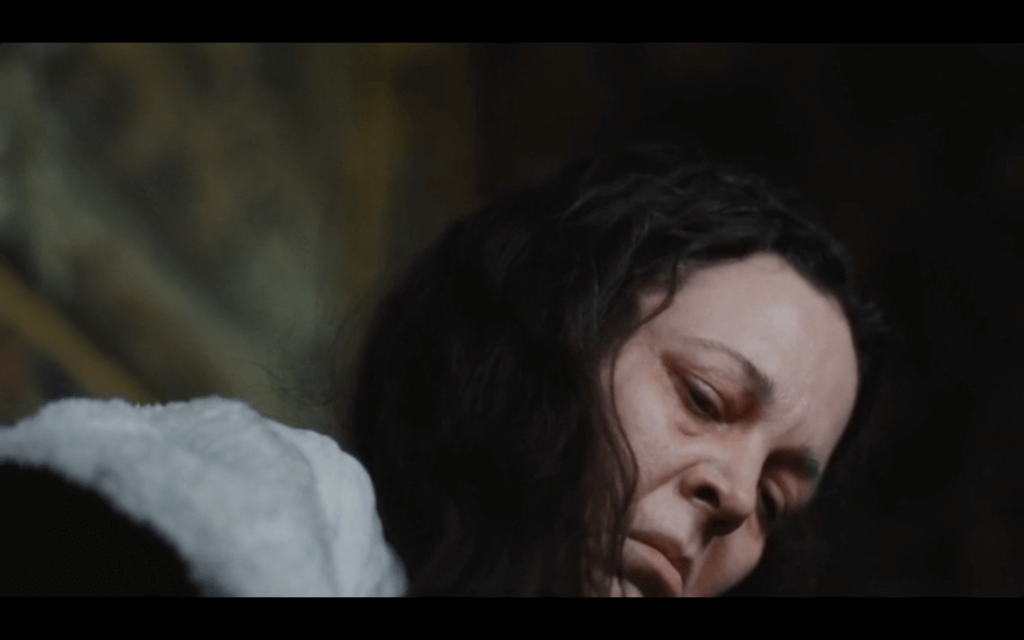
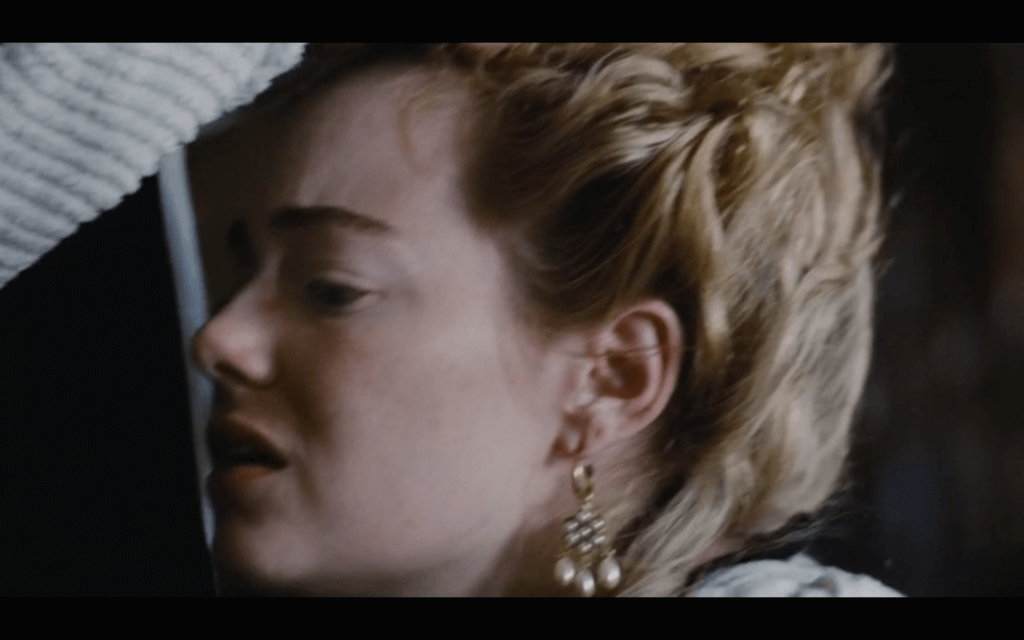
The moment is made even more surreal as the images of Anne and Abigail are stacked on one another. Then their images fade out as footage of Anne’s 17 rabbits fade in.


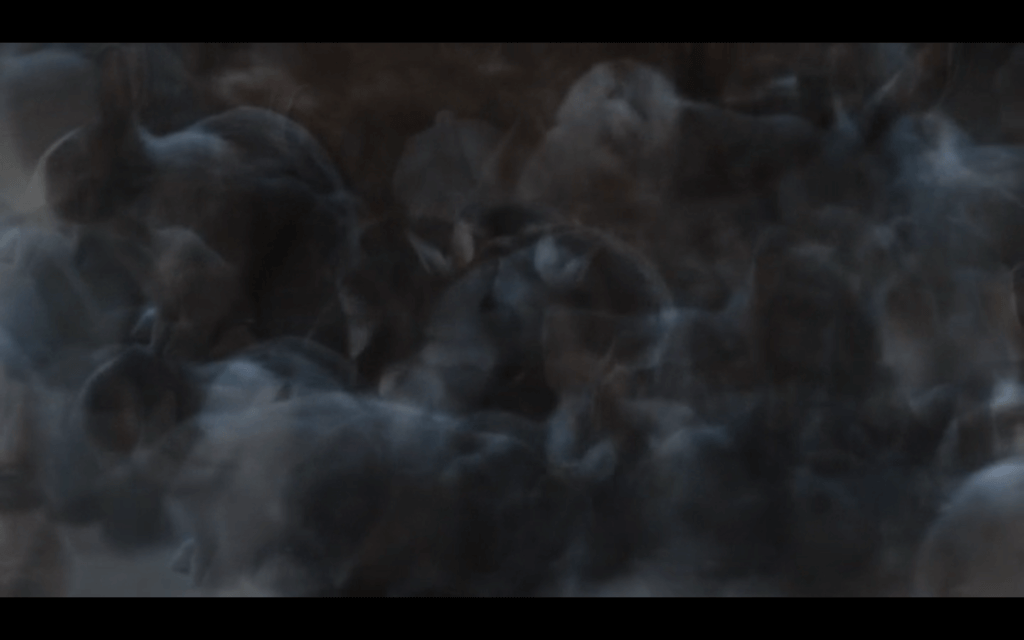
However in control you felt throughout this movie, it’s totally reasonable to feel lost during these final moments. And that’s not because the movie is too smart for you—it’s because the movie changes stylistically to make its grand point. This ending could easily be shot in a regular, more straightforward way and make the exact same point. But because we have these weird shots of rabbits taking over the screen, we focus more on the style than the actual components of the scene.
So let’s move past the style and focus on those components. To get there, we’ll look at the different ways a movie can end, the motifs that indicate how to read an ending, and then finally why the ending of The Favourite makes sense when you recognize Queen Anne as the main character.
Philosophical endings vs. resolutions
As Chris talked about in his piece on The Lobster, a movie directed by Yorgos Lanthimos (also the director of The Killing of a Sacred Deer and Dogtooth), there’s a major difference between philosophical endings and resolutions. And part of what’s tripping people up is they think that The Favourite has a philosophical ending. But it doesn’t, and I’ll show why.
Resolutions are what we come to expect from movies. Both Hardball and Rookie of the Year feature baseball teams trying to win the championship, so naturally you’d expect the movie to end with them either winning or losing the championship. Easy said, easy done. Right?
But sometimes you have a movie like The Lobster that exists outside the normal world, that has a dystopian setting, that defamiliarizes the idea of love and solitude. The Lobster world is a strange one that forces philosophical introspection from the viewer, so it makes sense for its ending to be open-ended, ambiguous, and…well, philosophical. However peculiar the ending may be, it probably doesn’t completely ruin you—the style of the finale doesn’t really diverge from the style of the rest of the movie.
That’s the big difference with The Favourite. For the most part, it’s a pretty straightforward movie. Sure it’s basically Big Brother meets British royalty, and sure the characters all talk in this black-comedic way—but compared to other Lanthimos movies, The Favourite very much feels like it could have actually happened.
And it kind of did actually happen! In the early 1700s there was a Queen Anne in frail health, and she was heavily influenced by Lady Sarah Churchill (Rachel Weisz) during a time of war. Sure, plenty of the details are obscured, but the movie does have known figures doing sketchy stuff that doesn’t feel too far off from modern politics. It may be a bit satirical, but it’s a far, far cry from a movie where people turn into animals if they don’t find love (aka The Lobster).
So that’s one major reason The Favourite’s ending throws people off—much like The Lobster, it’s an ending that doesn’t feel like a real resolution. If a movie like Back to the Future ended with Marty driving his Delorean down the street, slowly inching more and more towards 88 miles per hour…and then the movie cut to black and the credits rolled? That would be insane. This blockbuster shouldn’t have this ending that makes you wonder if the movie was trying to make a philosophical point the entire time—it ends with Marty getting back home, as expected.
But The Favourite doesn’t have a philosophical ending either—it just has an abrupt switch in tone and style. This is a normal resolution filmed in an artsy way, and there are plenty of clues throughout the movie to understand it.
A different kind of resolution
Remember when I mentioned Hardball and Rookie of the Year? Two stories about baseball teams that obviously end with the teams either winning or losing the championship? Well…neither of those movies end that way. And that’s because their stories aren’t about baseball.
Really Hardball is about teamwork, camaraderie, proving your worth. And Rookie of the Year is about youth, friendship, believing in yourself. Baseball is the catalyst, but all those themes are the skeleton of the story, what drive the characters and provide catharsis.
In Hardball, when G-Baby gets shot, his brother motivates his team and coach to continue playing, to go out and fight in the name of G-Baby; in Rookie of the Year, when Henry loses his ability to pitch, he knows it’s time to enjoy his childhood and spend as much time as he can with his friends—those are endings. That is resolution. It may not be the obvious way to resolve the story, but it fits, right? You don’t really question it, even though those movies deviate from what is seemingly the driving force of both movies: baseball.
That’s how we should think of The Favourite. Other than how it’s filmed, the ending doesn’t really deviate at all from anything we’ve seen in the movie:
- Anne has always had a right-hand woman tending to her sexual needs.
- Abigail fought to become the woman that looks after Anne.
- Anne’s 17 rabbits have been a prominent fixture throughout the movie.
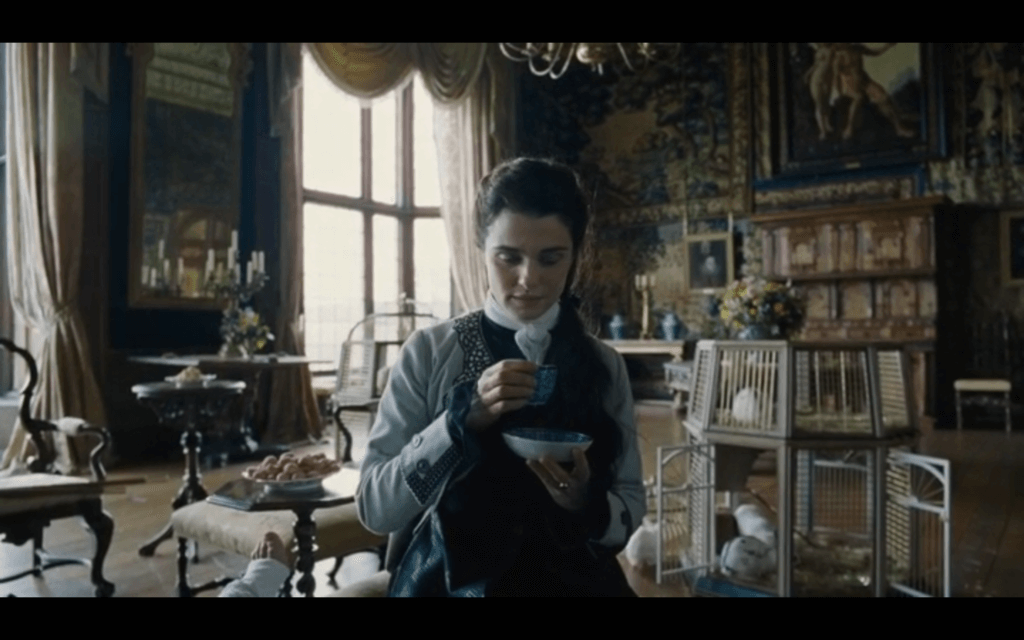
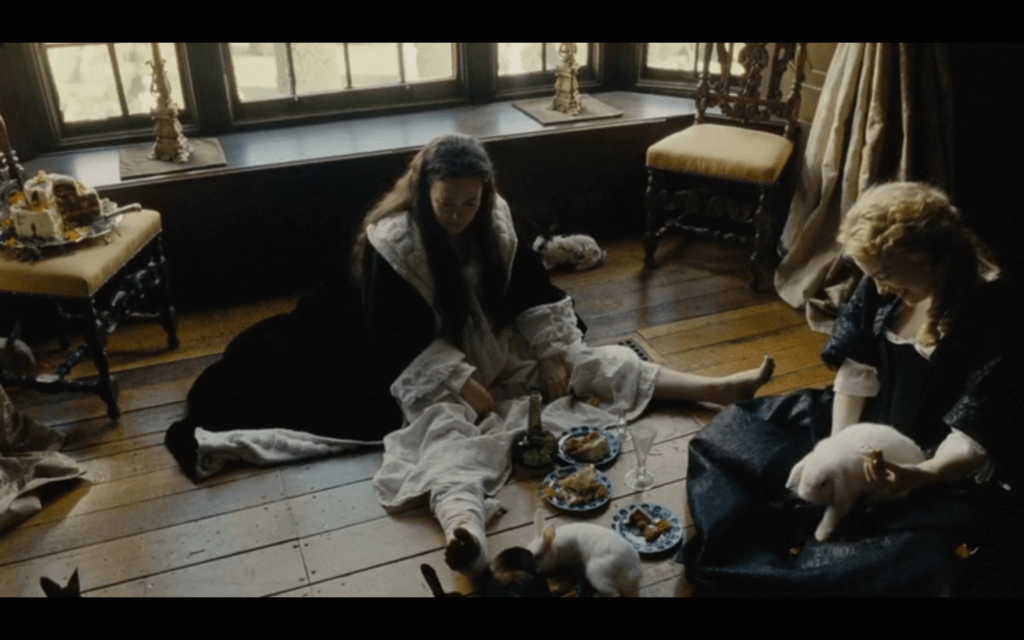
All the elements are there—it’s just how it’s all presented that throws us off.
Let’s boil that down to the three main motifs we’ve seen during the movie: sex; power struggles; animals.
- Both Sarah and Abigail used sex to get what they wanted from Anne.
- Sarah used Anne’s trust in her to badmouth Abigail, while Abigail poisoned Sarah and cultivated a story about Sarah stealing from the monarch.
- Each of the 17 rabbits symbolizes a child Anne lost.
Once again: apart from how it’s filmed, nothing in that final scene is out of the ordinary. All the clues are in place. So what does that final scene indicate?
What the ending of The Favourite means
When we use those three motifs to decipher the ending, an interesting conclusion emerges: this movie is about Queen Anne. The movie seems like it’s about the battle between Sarah and Abigail, but really it’s about what their fight does to the queen.
Let’s take a look:
Motif #1: Sex
When Anne grabs Abigail’s hair and forces her to “rub her legs”, for the first time in the movie, it feels like Anne is treating her personal adviser as a servant. Where the the sex once felt romantic with Sarah and impulsive with Abigail, it now feels sadistic, involuntary, passionless.
Motif #2: Power struggles
Whatever joy Anne once took with either Sarah or Abigail has been evaporated at the end of the movie. Because of Abigail and Sarah’s feud, they drove one another to despicable extents. Sarah turned Abigail into a power-hungry vixen; and Abigail caused Sarah to abuse her relationship with Anne. Because of the brawl, the love of Anne’s life had been arrested and all she’s left with is a woman she no longer recognizes.
Motif #3: Animals
And how does Anne know that Abigail has changed? Because she sees Abigail place her foot over one of Anne’s pet rabbits and press it into the ground.
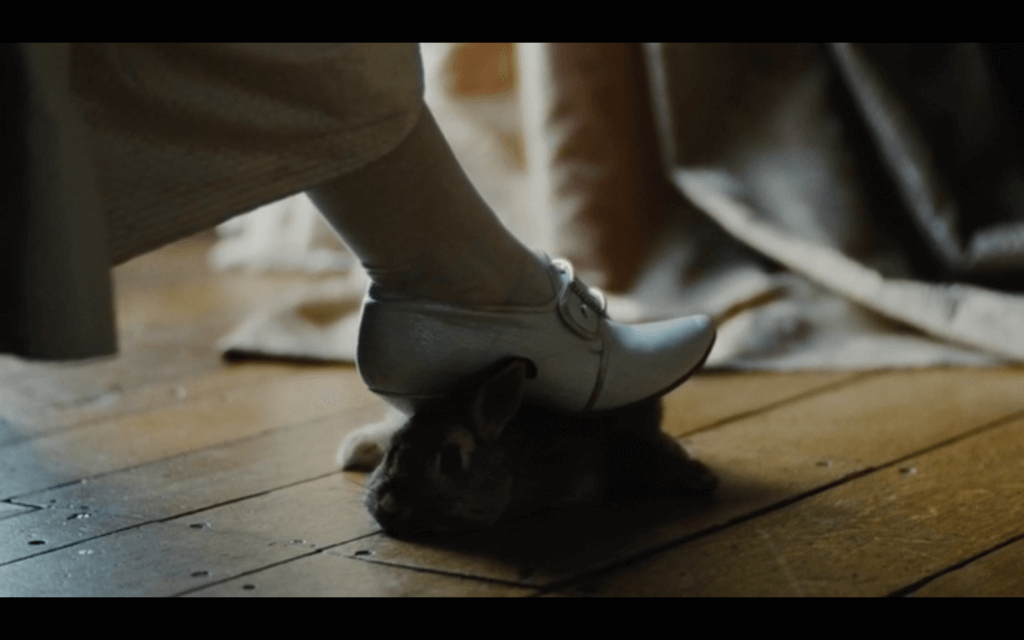
When Abigail and Anne met for the first time earlier in the film, they bonded over Anne’s rabbits. Anne revealed that each of her rabbits symbolized a lost child, and she saw the hurt and empathy in Abigail’s eyes—that moment was their connection.
Anne even says to Abigail about her lost children:
“Each one that dies, a little bit of you goes with them.”
So when Anne sees Abigail press her shoe into that rabbit, Anne’s demeanor changes. She denies Abigail’s help getting out of bed. She has a look of disgust as she grabs Abigail’s hair and forces to Abigail to sexually please her. Anne has seemingly lost all love and compassion that was alive in her during that somber moment with Abigail earlier in the film.
It becomes clear that Anne, who is in dire health and has no family, needed the people in her life to keep her going. And now that she’s lost both Sarah and Abigail during her final years (in real life she would pass away just a few years later), her reaction is to go to a dark place and demean someone she once bonded with.
Thus, the final shot signifies how fragile and vulnerable Anne was throughout the movie. Little by little, a little bit of Anne passed away as the people in her life passed on. So as the images of Anne, her confidant, and her babies fade from the screen, we see Anne’s humanity fading with them.
In the end, the rabbits didn’t just represent her 17 children—they also symbolized the life Anne had left in her. And now that they’re gone, she’s crossed a critical threshold at the end of her life from which she cannot come back.
The themes and meaning of The Favourite
The consequences of manipulation
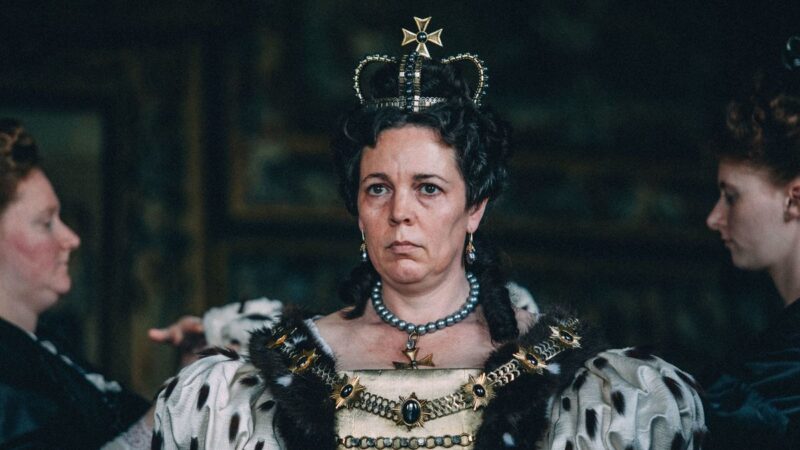
Power and manipulation form a complex and fascinating dichotomy in The Favourite. Sarah Churchill initially appears to have the upper hand in the game of manipulation she plays with Abigail, as by leveraging her intimate bond with the Queen of England, Sarah steers both the queen’s personal affairs and her political maneuvers.
But Sarah’s cousin Abigail, who is initially forced to work as a scullery maid, uses her initial status as a victim to gain favor—and her subsequent bond with the Queen to slowly dismantle Sarah’s influence. Abigail’s tactics are varied: she uses her charm and feigned innocence, plays the victim card when needed, resorts to sexual manipulation, and even uses poison to incapacitate Sarah. Abigail claws her way up from a mere servant to become the queen’s trusted insider, wielding her cleverness and an unyielding hunger for influence.
Queen Anne, the object of their manipulation, is not a passive entity either. While she may appear feeble and easy to control, she too exercises her power in subtle ways. She almost allows herself to be manipulated, knowing it allows her to exert control over her subjects. She uses her status as the Queen to demand emotional and physical attention and to pit Sarah and Abigail against one another.
Altogether, these varying entities to reveal the complicated, multifaceted nature of manipulation, showing that the battle to obtain status and exert control in society isn’t a one-sided battle. The ripple effects of such cunning games run deep, shaping the very fabric of relationships and the balance of power they precariously hold. In the film, the deceit and backstabbing set off a vicious cycle, making each attempt for control more cutthroat than the last, escalating to a point where people cause each other physical and emotional harm.
Thus, the movie exposes how these battles have damaging consequences. In their fierce battle for supremacy, Sarah and Abigail become outcasts, shrouded by the distrust they’ve sown. Sarah, despite her initial hold on power, is banished from the court, while Abigail, even after securing her position, is reduced to a mere servant, attending to the whims of the Queen. The games played out at court didn’t just mess with personal lives, but threw a wrench in the whole system, messing up how things got decided and run across the nation. Personal ambitions and rivalries are placed above national interests, resulting in a skewed decision-making process.
As director Yorgos Lanthimos told IndieWire, he wanted to “pare down the politics so it’s easier to understand the repercussions that come from the decisions that these three, or the actions that these three women take.” Thus, by focusing on the micro actions of his characters, the macro repercussions of their selfishness and disloyalty are highlighted. A seemingly small, narcissistic moment can have major consequences. It’s very akin to what a movie like The Departed does with its characters.
The masks we wear to hide ourselves
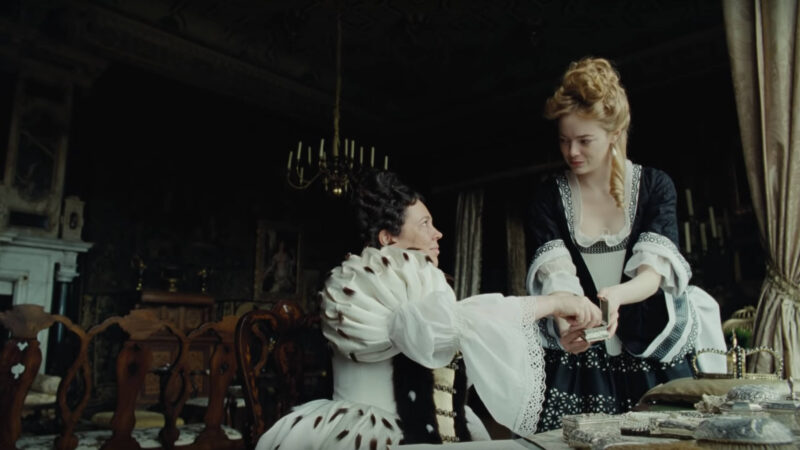
In The Favourite, the theme of identity and performance plays out through the actions and motivations of the main characters, who hide their true selves behind carefully constructed façades. Ambition and the fight to stay afloat drive these characters, but their deceptive tactics ultimately bring about more harm than good, showcasing just how damaging lies can be when power is on the line.
Abigail’s performance is the most striking. Starting as a fallen aristocrat, she enters the court appearing innocent and vulnerable, her humility in stark contrast to the entitlement of the courtiers. However, behind this mask of innocence lies a cunning and ambitious woman. Abigail plays her cards smartly, aiming not just to scrape by but to reclaim the high rank she once held. Abigail claws her way to the top, even going as far as to poison Sarah, showcasing just how far she’d go for power. Her ascent from servant to the Queen’s confidant, while a testament to her cunning, ultimately ensnares her in a relentless charade. In order to remain the Queen’s favorite, she has to constantly switch up her game and twist truths, which eventually becomes a trap of her own making.
Sarah, despite her outward toughness and assertiveness, also hides behind a performance, cloaking her personal political ambitions in a veil of devotion to the country, manipulating her influence with the Queen to advance her own interests. However, her failure to maintain her performance—being unable to hide her disdain for the Queen’s increasing reliance on Abigail—ultimately leads to her downfall. As he mask deteriorates and her true intentions are revealed, she loses her position, her status, and even her close friendship with the Queen.
Queen Anne, too, puts on a performance, albeit in a different manner. Her inconsistent behavior—shifting between a helpless, sick woman in agony over a gout flare and a petulant, powerful monarch—keeps everyone off balance. She throws her advisors for a loop, cleverly wielding her mercurial acts as both shield and sword in the game of power. But her emotional ups and downs, mixed with leaning too much on others, leaves her open to being played, showing just how damaging her act can be when it comes to ruling effectively.
Why is the movie called The Favourite?

The title does not refer to a single individual, but rather encompasses a larger role—there is no definitive “favorite.” Instead, it is a position that is constantly shifting, dictated by whoever is able to more effectively pander to the Queen’s whims. The scramble for the Queen’s approval is a vivid dance of power, ever-changing and unpredictable, where today’s favorite could easily become tomorrow’s memory. At face value, The Favourite subtly reveals the intricate mental games and rank jockeying among those vying for influence.
We can then broaden that micro battle to society, where there’s an everyday struggle between individuals to propel one’s prominence, between factions of people to stand above others. The favoritism depicted in the movie is not only limited to the personal and sexual relationships between the characters but also mirrors the widespread system of patronage in the 18th century—a timeless dynamic that speaks to audiences today. Aristocratic figures, with their grip on power, often tip the scales in favor of those who can sweeten their lives with perks or favors, shaping not just personal ties but steering the course of society’s progress as a whole. Against this backdrop, The Favourite captures the interplay of ambition and influence in a society deeply entrenched in class distinctions.
The title subtly exposes the double-edged sword of favoritism, where being someone’s “favorite” is as fraught with risk as it is appealing. The “favorite” is often not in an enviable position. Being the favorite brings clout and sway, but it’s a role packed with non-stop stress and unpredictability. As seen in the movie, the favorite must maintain a precarious balance, constantly adapting and strategizing to retain their position. The favorite is expected to be everything the Queen wishes at any given moment, bearing the weight of the Queen’s emotional, physical, and political demands. Being the favorite is like walking a tightrope—one wrong move, and you could tumble from grace.
Again, we can symbolically blow this struggle up to society. Gaining status in society is both a blessing and a curse. When you’re powerful, when you’re wealthy, when people care about what you think, it gives you dominion and influence. But on some level, people only attach themselves to you because of what you can provide. This puts pressure on people with status, on entities with immense power to offer more and more and more. The only way to grow stronger is to grow your base, and your followers are only satisfied if you can prove you provide an upward trajectory. Thus, the title The Favourite doesn’t just apply to the “favorites,” but the pressure that comes with being someone who has a “favorite,” the burden of people vying to become your favorite.

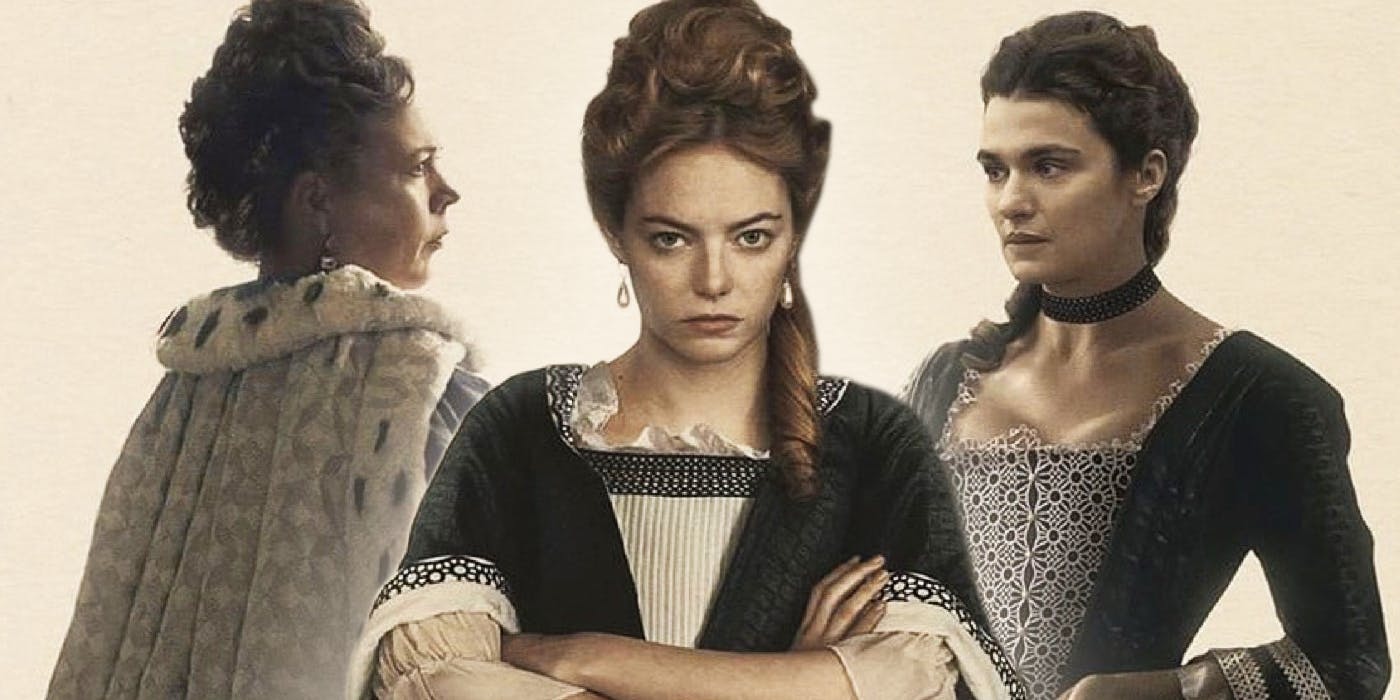
In addition when Anne rose from her bed she had that far off stare as she had during different time’s in the movie when she had a realization of something. Then when Abigail was rubbing her she asked “shall we lay down” Anne rebuffed the question to remind Abigail she is the Queen and she will always be in servitude.
Great article and discussion! Thank you all.
Don’t forget earlier in the movie, Queen Anne says “everyone dies, now [Sarah] too”. She had no hope that any of her loved ones would actually stay.
Yes yes yes. Seelois and Alexis hit it on the head exactly. Abigail’s sole intention with her devious scheming and duplicity was to be her own master, control her own destiny and avoid being physically/sexually used and abused by anyone. Abigail manipulated Anne, Sarah, Harley and her eventual husband to secure her “freedom”. She broke Anne and Sarah emotionally. She tainted their love and honest feelings for one another. She used and sullied Anne’s grief over her lost children and shredded her own moral values (which were dubious from the onset) in her effort to climb her way to be in the coveted position of Queen consort. After all her scheming efforts Abigail found herself full circle back with the proverbial thin-cocked German who will treat her like a meat prize, with the added bonus that Anne now fully recognizes Abigail’s despicable nature and will pay her back in kind.
Clever, it reminds me of tactics used in murder mysteries, where the person that is guilty is hinted at throughout, but largely the focus is on those around them until it is revealed mostly towards the end the true culprit. Using this type of formula for another genre is kind of genius.
It’s not just the rabbits, but the sound effects at the end are that of a raging fire. Abigail’s father sold her virginity to cover his gambling debts. She’s fought back more sexual harassment and is terrified of ending up as a prostitute, plying her wares to sailors returning from the war. At that moment with the Queen, she realizes that she’s willingly put herself in that same position. That last sexual act isn’t done for pleasure, but for power. Abigail did indeed end up a prostitute, and found that a woman can be just as cruel and demeaning in bed as a man.
I agree with the analysis. I have my own take on it as well. I noticed Abigail’s face with anguish. I felt as if she realized that now she was stuck with having to serve Queen Anne and was now forever trapped in a miserable Existence with Queen Anne. When she trapped the rabbit under her foot it was a foreshadowing of her being forever trapped to serve the Queen. The Queen was distraught when she lost her best friend and lover. She will forever miss her. She may have felt doubt about her decision to be rid of her and regret. The only thing she can do to numb her pain is with physical pleasure. She realized that Abigail maybe didn’t love her like Sarah may have. She now turns on her and lets Abigail know she is no longer looks favorably at her. She will use her as a servant and not as an equal and she let her know that will always be beneath her. When they had relations she was pleasured in bed while laying at the same level. She treated her as her equal. Now the lines have been drawn. She may also feel because of Abigail she lost Sarah. The bunnies represent all the innocent lives lost.
Queen Anne was no longer is oblivious to her sad existence and maybe even what had transpired. She has lost so much thus all the bunnies superimposed over their faces. Death of her happiness, loves, friendship and her trust in those she held close to her heart. Lastly her ailing Heath with death at her door step. One rabbit for each of the things she has lost in her life.
I agree with a lot of this. I also thought going a little further, it was to make Abigail feel a little like a prostitute or make her feel like she did when she was young and had to sexually service others or was raped. The prostitution bit (the brothel) and the comment of Abigail’s sexual abuse past needs to fit into this thematically.
I did not get the sense that Anne actually saw the bunny-abuse. The squealing woke her, yes, but it didn’t seem that she grasped why.
i thought Sarah used Abigail to get away from Anne once and for all . I mean who wants to be around such a miserable person. Sarah knew Abigail wanted to take her place and she took advantage of the situation . At the end of movie Anne and Abigail were miserable but Sarah was happy with her husband smiling … thats just my 2 cents. it kinda make more sense to me.
I thought the exact same thing….
Interesting, especially since Sarah notices the tea is off at first sip. She seems to consider this and drink it knowing what will happen. Anyone else agree?
Yep. Abigail was Anne’s ticket out. She laughed at her at one point saying “you really think you’ve won?” She knew exactly what she was doing.
I agree because when Abigail was moving into Sarah’s room she asked her : “do you really think you won?” Which in my opinion means that Sarah didn’t lose they both won Abigail got what she wanted and Sarah was finally free from the queen which is sad because the queen thought that they both loved her when they both didn’t
Seems to be that she was half happy as she also sighed at the end of her last appearance (when “the mail has arrived”).
My two cents is that there is no “main character” at this movie but more like a trio and that the story with Sarah was that she really did try to do what’s right for the country but was also relieved to get out of that (she did give a fight to stay in control and lost so it wasn’t her plan but she accepted the reality).
All the elements were there all the time, why all the confusion.
Excellent analysis. Now in retrospect it all fits together.
That was a wonderful analysis and I feel that it was spot on. I read your article so that I could make sure my depiction was correct and it seems we were on the same page. Thank you
Great work
The analysis was spot on
Yes agreed , I did so very much want to know how the letter read , I can only assume it’s quite heavy words relating to Sarah and Anne’s relationship and its demise had made Abigail feel quite sick with herself & the way she behaved, ultimately loosing “the game “ she and Sarah appeared to be playing when Sarah remarked . “ we’re playing quite different games “ …hence the tear before burning it ….maybe acknowledging her changing into a quite unacceptable person in her own eyes eventually ! …..maybe
I like that reading! It makes me want to watch the film again haha
Gud